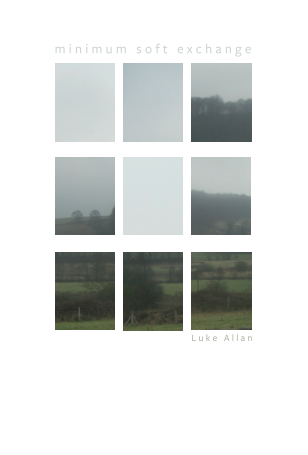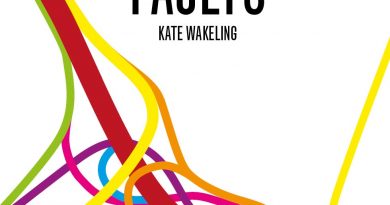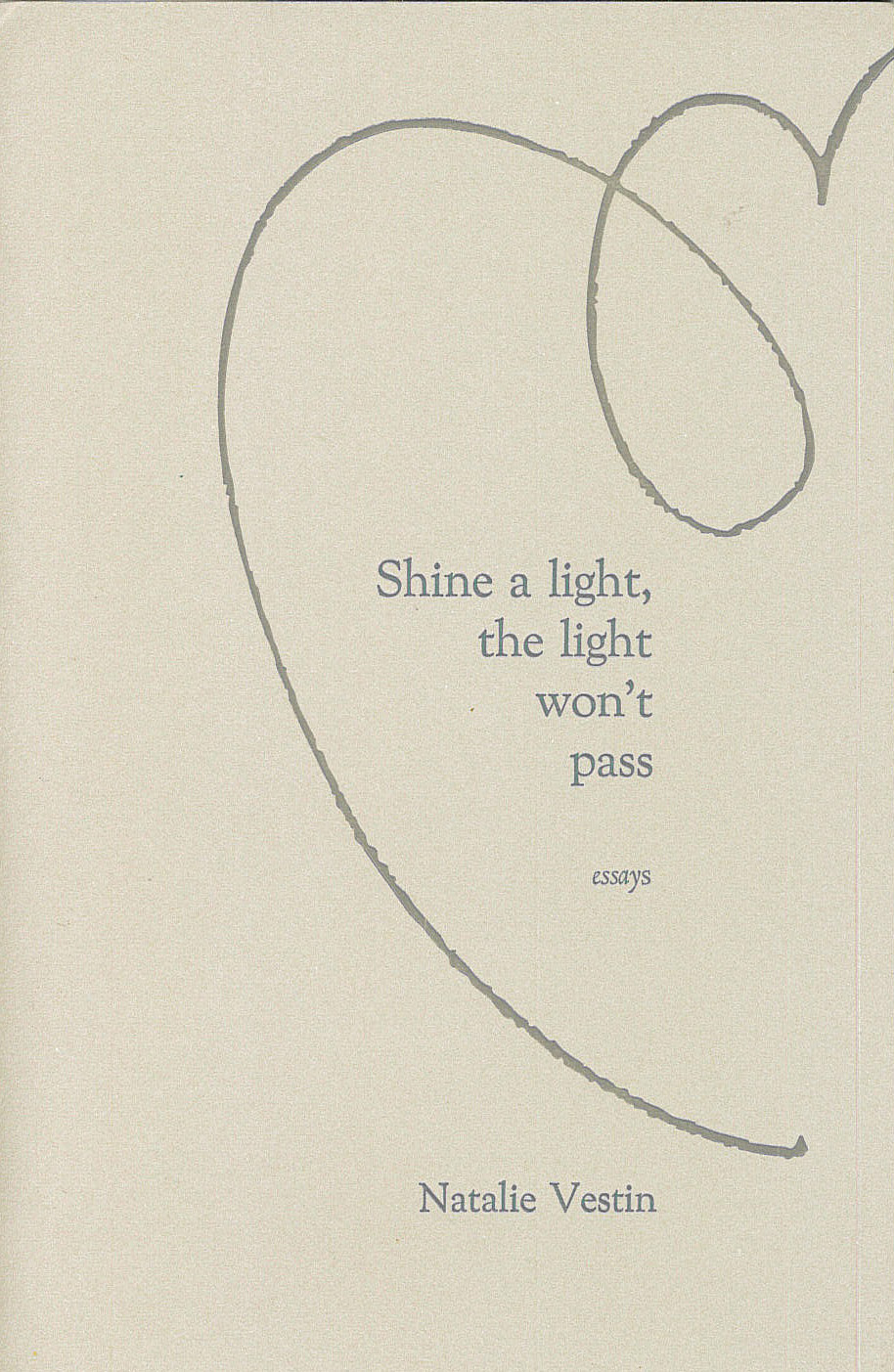minimum soft exchange by Luke Allan
– Reviewed by Alice Tarbuck –
Colloquially, works we enjoy ‘stay with us’ – but not in their original, neat, lineated form. Instead, they trickle through consciousness, come back to us fragmented and at strange times, echo in curious variations. Luke Allan’s minimum soft exchange is a pamphlet engaged with what happens after reading. It comes with a reading list – from Bukowski to Woolf, via Bachelard, Larbaud, Proust. Not only does Allan list these influences on the back page, he incorporates them into a series of poems, reading x on y: ‘reading Proust on Uist’, ‘reading Pam Rehm at Outlandia’, ‘reading Gabriel Marcel at Inshriach’. His poems synthesise the experience of reading with the process of writing poetry, and the idea of being situated in a particular place. Despite geographic and cultural differences, these are not juxtapositions but beautiful incorporations, creating new approaches to both landscape and writer. Allan has an extraordinarily light touch when it comes to language, precision tamed with gentleness and empathy. Throughout the collection, his formally innovative poetics encourages double readings, imaginative associations, and a continual awareness of the materiality of language.
The result is by turns engaging, humorous and moving. ‘reading Proust on Uist’ is very funny. It opens in situ, ‘on the summit of Beinn Mhor / eating a tiny box of Crunchy Nut’. Allan’s madeleine is selection-box cereal, eaten at altitude. Contemporary poets who write about nature are often accused of not mentioning the car-park when rhapsodising about the mountain; Allan’s cereal brings the supermarket to the summit, and allows it to coexist with ‘the woods blue with distance / the sea a noisy picture of the sky’. Natural beauty and the mundane are always in balance in Allan’s work, undercut by a self-deprecating humour that refuses to glorify the position of the poet.
Allan’s work is formally innovative, but it is invested in drawing the reader into form, making formal experimentation a welcoming, gladdening thing. ‘a note on walking to Loch Coruisk’ allows me to ‘follow both paths’ that are delineated on the page, showing how to follow ‘one / with / your / feet’ and ‘one / with / your / eyes’. This is a particularly beautiful poem about walking which draws on embodied experience, the eyes and feet working in concert to create perception. Rather than describing the walk in linear terms, Allan understands the ebb and flow of attention, and his poems dwell as much on the distractions that occur whilst walking as the experience of walking itself.
One of Allan’s strengths lies in his minute alterations to existing text. In ‘after Larbaud’, he re-lineates a sentence from Larbaud’s The Hamlet of the Bees into a two-stanza word block with wide kerning. The sentence (‘a calm brook flowing between two banks covered in violets’) becomes a gently overflowing column. We must encounter the text anew – our eyes are slowed over the page, reading each letter as one might encounter violets in a bank – attention shifting between each individual letter and the text-block as a whole. The reader re-assembles the words, crafts the sentence anew with their eyes.
A short series of circular poems are refreshing: there is joy in reminding your eyes how to read upside-down, then feeling you have earned the meaning you eventually find. ‘after Woolf’, ‘after Bukowski’ and ‘after Bachelard’ all take short phrases that can be read repeatedly, over and over, and still make grammatical sense (or are proximate to grammatical sense). The most pleasing of the three is ‘after Bachelard’, which addresses the idea of the curve even as it forms one. Unwound, it reads ‘the grace of a curve is an invitation to remain’, and remain we do, encircled by the words that, like a wheel, can turn endlessly. Here again, we have a moment ripe for close attention – but it vastly underrates Allan’s poetry to say that he is only attempting to refocus the reader’s attention on the materiality of language. soft minimum exchange attempts to draw out unlikely and touching relationships between objects, places, people. We see this particularly in ‘travelogue’:
Child Single
Adult Return
Day Saver
This is found text of the most mundane order, the ticket options available on Edinburgh buses. Arranged (in order of price), these tickets reveal a small adventure – perhaps a child lost on the wrong bus, for example. The reader becomes aware that the smallest shift in text positioning and context can reveal the potential for pathos.
We see this most poignantly in Allan’s dicotes, where two words, different only by the substitution of a single letter in a set position, mark them apart. Not only are they paired, there is also an easily imagined relationship between the two words. The impulse for the reader to narrativise is almost irresistible. ‘guilt / quilt’ calls to mind hung-over regret, the duvet-day, whilst ‘stone / shone’ captures the way stones might glitter under running water. These are reminiscent of various other extremely minimalist forms – the monostitch poems of Ian Hamilton Finlay, for example – and they have the same charm and playful qualities.
This playfulness contends with a sincerity that runs throughout Allan’s poetry, reminiscent of Thomas A. Clark’s poetry in places – albeit using the authorial ‘I’ with far greater regularity. In the pamphlet’s final poem, ‘reading Gabriel Marcel at Inshriach’, the final stanza – of flight, escape, endurance – is understated and moving: ‘I carry you / with me, tired and / with me, from what’s coming’. The commas, separating the clause, offer caesurae in the short lines. Combining these with the abrupt line break of ‘with me, tired and / with me’, offers a sense of gasping, of struggle, whilst on the page we see the repetition of ‘with me’, and the lengthening of each line of the final stanza freeing-up space, the arrival of a moment. The whole pamphlet offers this – a space for consideration, a place apart, in which to experience the joy of words.





